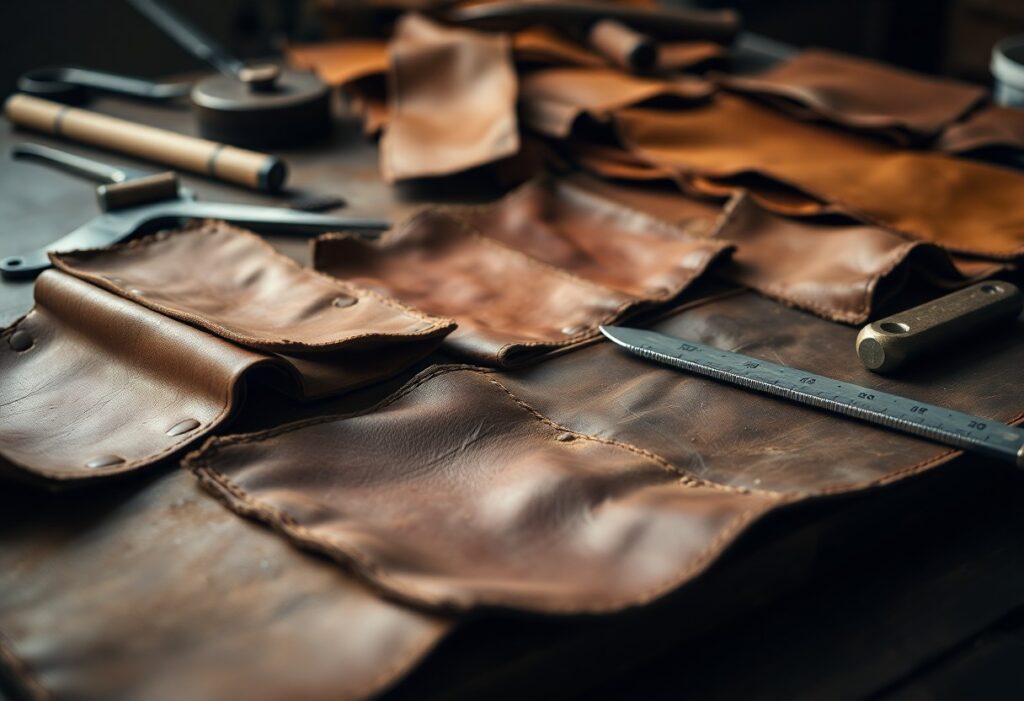
The advancement of leather tanning techniques over time has resulted in a sophisticated process that greatly influences the overall quality of leather products. Different tanning methods produce distinct characteristics in leather, affecting critical attributes such as durability, water resistance, overall texture, and the ability to retain color over time. The tanning journey begins with raw hides and involves several essential stages, including chrome tanning, vegetable tanning, and chrome-free methods. Each method uniquely alters the leather’s properties, impacting its usability and maintenance. By gaining a thorough understanding of these processes, you can make informed choices regarding leather quality while also considering the environmental implications, as some methods are notably more sustainable than others.
Dive Deep into the Different Leather Tanning Techniques
In the realm of leather production, an array of tanning methods are utilized to convert raw hides into versatile leather. The main techniques include chrome tanning, vegetable tanning, and chrome-free tanning. This detailed guide aims to equip you with a comprehensive understanding of each method, allowing you to select the one that aligns perfectly with your leather requirements and preferences.
| Method | Characteristics |
| Chrome Tanning | Fast, water-resistant, 85% of global production |
| Vegetable Tanning | Natural, eco-friendly, 10% of production |
| Chrome-free Tanning | Environmental-friendly, 5% of production |
| Combination Tanning | Blends multiple methods for unique properties |
| Aldehyde Tanning | Specialized process for specific applications |
Unpacking the Chrome Tanning Method for Quality Leather
The chrome tanning process utilizes chromium (III) salts to create leather that is not only soft and supple but also highly sought after for various applications. This method produces leather that boasts exceptional water resistance and readily absorbs dyes, making it a prevalent choice across the leather industry. One of the remarkable aspects of chrome tanning is its efficiency; the entire process typically takes only 24-48 hours to complete, making it ideal for mass production needs.
Exploring the Timeless Technique of Vegetable Tanning
As one of the oldest and most traditional methods, vegetable tanning employs natural tannins derived from tree bark and leaves. This technique is celebrated for its ability to produce leather that matures beautifully, developing a rich patina over time while being biodegradable. The various forms of vegetable tanning, such as those using oak bark, chestnut, and mimosa extracts, contribute to the unique attributes of the final product. Expect this meticulous process to take around 4-6 weeks, yielding leather that is generally firmer and more structured in comparison to chrome-tanned leather.
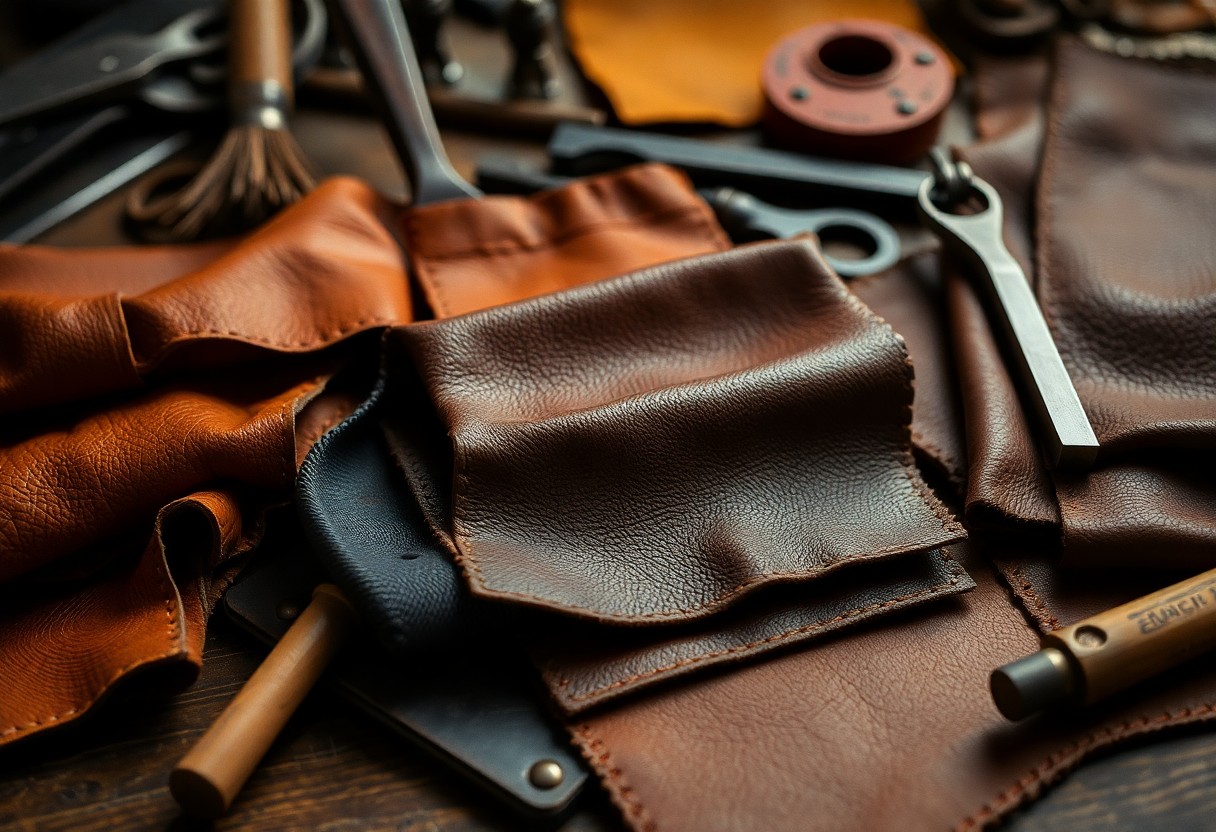
Step-by-Step Overview of the Leather Tanning Process
Transforming raw hides into high-quality finished leather involves a systematic and detailed process. Here’s a thorough examination of each vital step and its role in achieving the desired quality of leather.
Pre-Tanning Operations Essential for High Quality
To guarantee superior leather quality, raw hides undergo a series of meticulous preparation steps. Initially, the hides are soaked in clean water for 24-48 hours to remove salt and dirt, followed by a liming process that effectively eliminates hair and fats. Maintaining accurate pH control during this stage is crucial to avoid any potential damage to the hides, ensuring a smooth transition to the tanning phase.
Core Procedures in the Main Tanning Phase
The pretanning process initiates with deliming and pickling, preparing the hides for the primary tanning agents. The predominant method employed is chrome tanning, utilizing chromium sulfate and capable of producing leather in as little as 24 hours. In contrast, vegetable tanning relies on natural tannins, extending the process to approximately 20-60 days.
Temperature control is another vital aspect of the tanning process. Chrome tanning is typically executed at temperatures ranging from 35-40°C, while vegetable tanning occurs at lower temperatures of 20-25°C. Constant monitoring of pH levels is essential to prevent damage to the leather and ensure optimal absorption of tanning agents, resulting in high-quality leather.
Optimal Leather Treatment Methods to Enhance Quality
A variety of techniques are available to enhance the properties of your leather. From surface finishing to deep penetration treatments, each method serves a distinct purpose. With the right treatment, you can prolong your leather’s lifespan by up to 50% and significantly enhance its resistance to water, heat, and everyday wear.
Diverse Surface Treatments for Improved Leather Characteristics
Surface treatments applied to leather can encompass waxing, buffing, and protective coatings. These techniques can enhance water resistance by up to 70% and allow you to select between a shiny or matte finish according to your preference. Additionally, surface treatments are crucial in safeguarding leather against UV damage and the rigors of daily use, ensuring longevity and preserving appearance.
Dyeing Techniques for Enhanced Color and Durability
Your leather can absorb different types of dyes at varying depths. Aniline dyeing, for instance, penetrates deeply into the leather, while surface dyeing permits a more controlled application of color. The dyeing process you choose will have a direct bearing on both the aesthetic and durability of the leather.
Moreover, the dyeing method you select significantly impacts the final characteristics of the leather. Drum dyeing can achieve up to 95% color penetration, while spray dyeing provides enhanced precision in color application. It is worth noting that natural dyes tend to be more eco-friendly but may fade approximately 20% faster than their chemical counterparts.
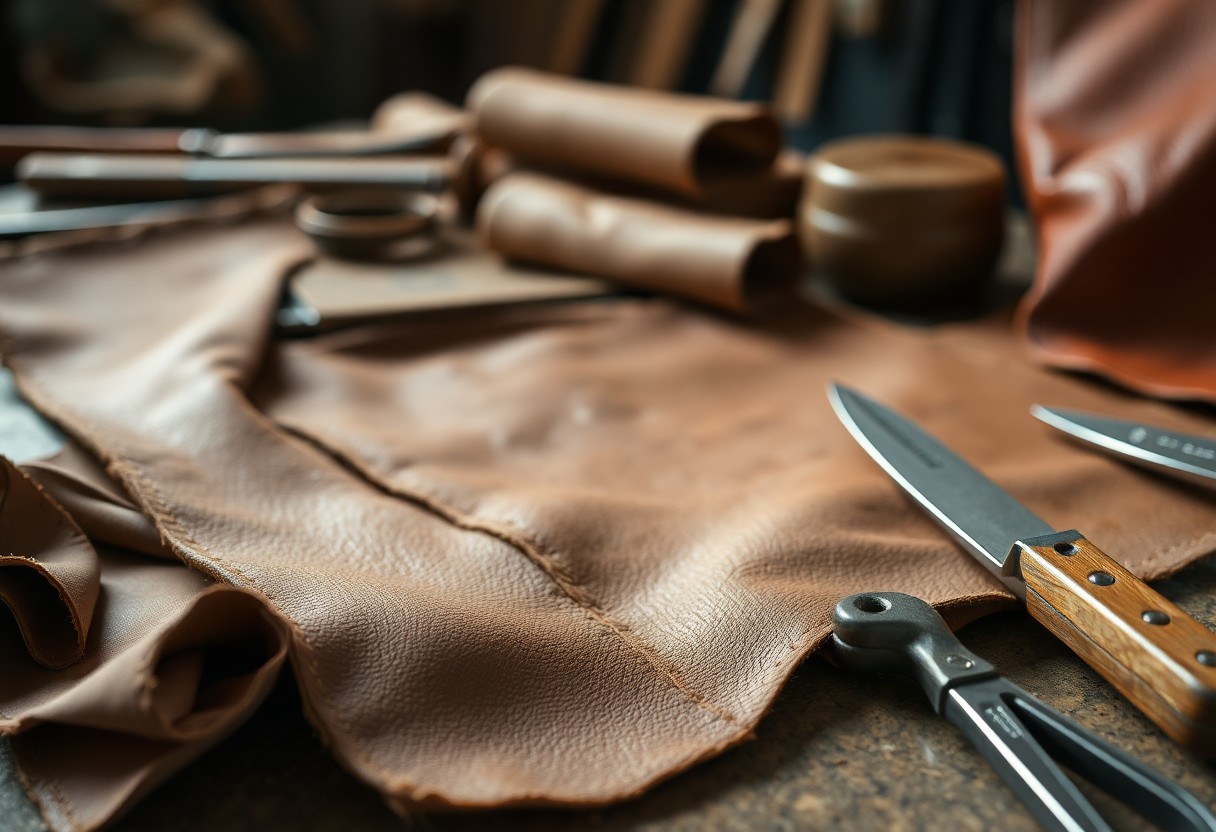
Key Quality Factors in Leather Processing and Production
The quality of leather is shaped by a multitude of interconnected factors throughout the processing chain. Understanding these elements is vital for achieving outstanding results in both leather selection and maintenance. The tanning method, hide quality, and processing parameters all play essential roles in determining the final attributes of the leather. By mastering these aspects, you will be better positioned to assess leather quality according to your specific requirements.
Raw Material Selection for Superior Leather Quality
When selecting raw materials, it’s crucial to focus on the condition of the hides and the animal source. The quality of your raw materials directly affects the characteristics of the finished leather. The best hides come from healthy animals and exhibit minimal surface defects. Look for consistent thickness and the absence of parasitic damage. It is essential to choose materials based on their intended end-use, as different applications necessitate specific hide characteristics to ensure functionality and durability.
Significance of Processing Parameters in Quality Assurance
A direct correlation exists between processing controls and the overall quality of leather. Maintaining precise control over pH levels, temperature, and chemical concentrations is critical for optimal results. The tanning duration generally ranges from 24 to 48 hours, with temperatures carefully regulated between 35-40°C. Your diligent oversight of these parameters ensures consistent leather quality throughout the production process.
This meticulous attention to detail should extend to every stage of processing. You need to monitor moisture content (ideally 45-55%), maintain appropriate drum speed during tanning, and ensure accurate chemical dosing. Furthermore, the drying conditions must be managed carefully to prevent any damage to the leather. A thorough focus on these parameters culminates in higher-quality finished leather that meets the highest standards.
Expert Recommendations for Optimal Leather Treatment Outcomes
Not all leather treatment processes yield the same level of quality. It’s essential to concentrate on temperature control, chemical balance, and timing precision throughout the tanning process to achieve the best results.
- Regularly monitor pH levels
- Maintain consistent temperature
- Adhere to exact chemical ratios
- Document each step meticulously
By recognizing the signs of effective tanning, you can ensure the production of high-quality finished leather that meets your expectations.
Techniques for Process Optimization and Improvement
To achieve optimal results, controlling your tanning environment is vital. Maintain your workspace at temperatures of 20-25°C and keep humidity levels between 45-55%. Ensure that your chemical solutions are fresh and accurately measured. Regular maintenance of equipment is crucial for attaining consistent results, as even minor deviations can lead to significant quality issues.
Ensuring Quality Standards in Leather Care and Maintenance
The quality of leather is heavily influenced by your storage conditions and handling procedures. Store your leather in a dry, cool area away from direct sunlight to maintain its integrity. Regularly monitor the moisture content and rotate your stock every 30 days to prevent any deterioration.
Monitoring the entire process is critical for upholding quality standards. Your routine checks should include pH testing, physical inspections, and moisture content analysis. Document all findings and make necessary adjustments to your procedures based on the results. Consistent quality control allows you to identify potential issues before they negatively impact your final product, ensuring that you deliver only the best leather.
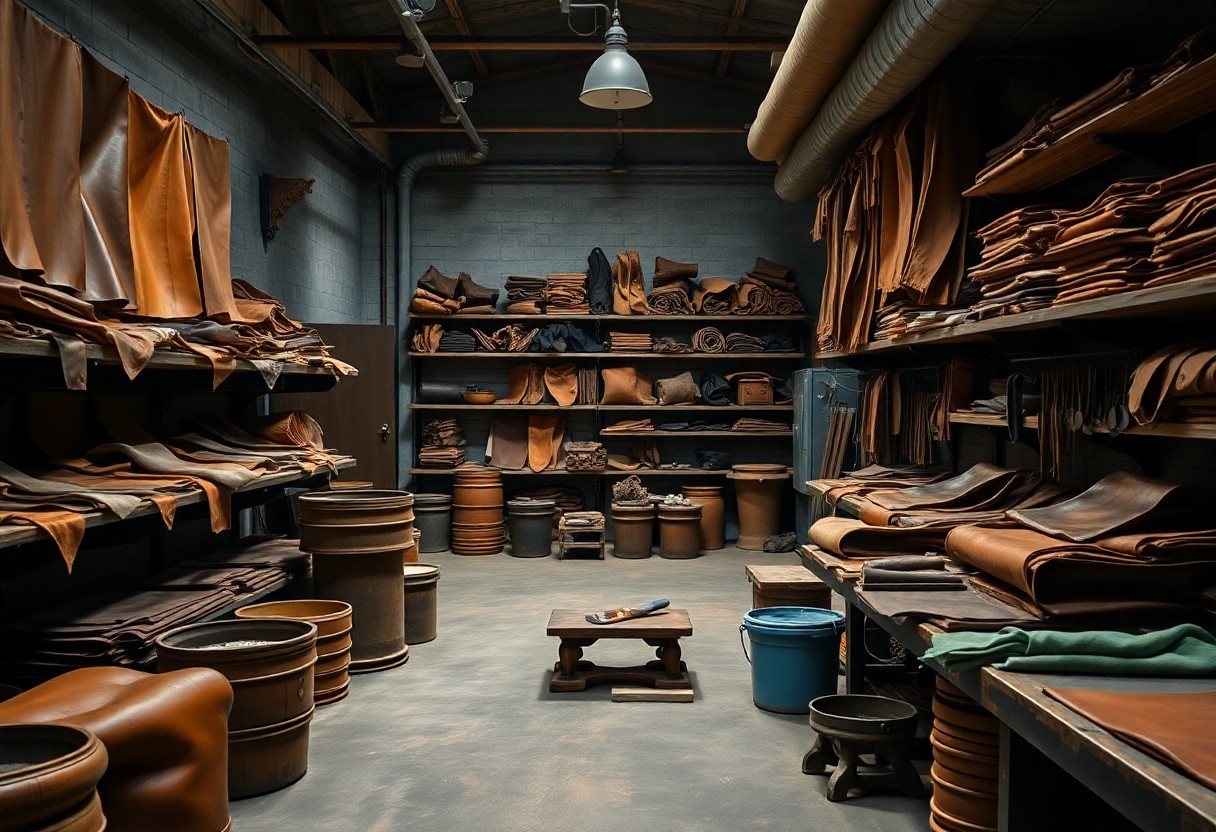
In-depth Evaluation of the Benefits and Drawbacks of Tanning Techniques
To develop a comprehensive understanding of leather tanning, it is crucial to assess the various methods based on their advantages and disadvantages. Below is a detailed comparison of the primary tanning techniques:
| Pros | Cons |
|---|---|
| Chrome tanning: Quick processing, cost-effective | Chrome tanning: Environmental concerns, potential disposal issues |
| Vegetable tanning: Eco-friendly, natural process | Vegetable tanning: Time-consuming, requires higher water usage |
| Chrome-free tanning: Environmentally safe, good quality | Chrome-free tanning: Complex process, higher costs |
| Combination tanning: Diverse properties | Combination tanning: Difficult quality control |
Economic Considerations of Leather Tanning Decisions
The choices made regarding leather tanning methods can significantly influence your production costs. Chrome tanning boasts 85% cost efficiency compared to vegetable tanning, while chrome-free methods often increase expenses by 20-30%.
How Tanning Choices Affect Leather Quality
The quality of even the finest leather can be severely compromised by poor tanning choices. Your selected tanning method directly impacts essential attributes such as durability, water resistance, and texture.
For example, leather treated through chrome tanning offers superior water resistance and flexibility, while leather tanned using vegetable methods tends to exhibit better aging characteristics and develops a unique patina as it matures over time.
Key Insights on Leather Tanning and Treatment Strategies
The information presented highlights that various leather tanning and treatment methods significantly influence the quality and attributes of your leather. The choice between chrome, chrome-free, or vegetable tanning will heavily impact your leather’s durability, texture, and environmental effects. Furthermore, the dyeing method you select—whether it be aniline or crust—will determine your leather’s color depth and aging process. Finally, the type of finishing applied—be it full grain, corrected grain, or top-coated—sets an essential standard for appearance, breathability, and maintenance needs. By thoroughly understanding these processes, you will be empowered to make well-informed decisions regarding your leather purchases and care strategies.
Your Leather Tanning Questions Addressed: FAQs
Q: What are the key differences between chrome tanning and vegetable tanning?
A: Chrome tanning makes use of chromium salts, resulting in soft, highly water-resistant leather that is processed rapidly and economically. This method represents 85% of global leather production. Conversely, vegetable tanning relies on natural tannins sourced from tree bark and leaves, requiring a longer processing time while producing leather that develops character and charm with age. Although vegetable-tanned leather is more environmentally friendly regarding disposal, it is more susceptible to staining compared to chrome-tanned varieties.
Q: How does aniline dyeing affect leather quality and aesthetics?
A: Aniline dyeing entails submerging leather in dye baths that penetrate deeply into the material. This method yields uniform color throughout the leather, ensuring excellent color retention. Modern aniline-dyed leather is often dyed partially through rather than completely, preserving a lighter inner layer. This technique enhances the leather’s durability while ensuring good color depth on the surface, contributing to its overall appeal.
Q: What differentiates full grain leather from corrected grain leather?
A: Full grain leather retains its natural surface without sanding or artificial overlays, showcasing natural pores, the strongest fiber structure, and the ability to be restored when scuffed. In contrast, corrected grain leather undergoes sanding and is often coated with a plastic layer. While corrected grain is easier to clean and maintain, it typically lacks breathability and may crack over time without the possibility of repair.
The Article Guide to leather tanning and treatment methods processes types and their impact on quality appeared first on My Shoes Finder
The Article Leather Tanning: Methods, Processes, and Quality Impact Guide Was Found On https://limitsofstrategy.com

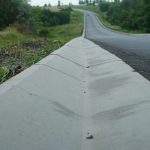
Your exploration of leather tanning techniques provides a fascinating lens through which to understand not just the material itself, but also the cultural and environmental implications tied to it. The distinctions between chrome tanning and vegetable tanning, for instance, highlight not only the technical outcomes—like texture and durability—but also the ethical considerations surrounding leather production today.
You’ve really hit the nail on the head with your thoughts about leather tanning techniques. It’s wild to think how what we wear on our feet—or those belting belts around our waists—can tell us so much about cultural values and environmental concerns. When you break it down, leather isn’t just a resource, it’s practically a historical narrative woven into our daily lives.
It’s fascinating how you put that—leather really does encapsulate so much more than just a material. Its journey from animal to product carries with it stories of tradition, craftsmanship, and even globalization. Many cultures have unique leatherworking techniques that reflect their values and lifestyles, which makes each piece almost like a cultural artifact.
Your analysis of the leather tanning process captures both the technical and environmental aspects beautifully. It’s fascinating how each method shapes not only the durability and aesthetic of leather but also influences its lifecycle and sustainability. For instance, while chrome tanning is efficient and produces high-quality leather, the environmental concerns—particularly regarding waste management and chemical runoff—cannot be overlooked.
You bring up an important balance in the leather tanning conversation. It’s all tied to a complex relationship between innovation and responsibility. Take vegetable tanning, for instance. It’s slower and often seen as less efficient, but it has deep roots in tradition and connects the product closely to its source. There’s something to be said for the stories that come with each hide and the sustainable practices that are often a part of this method.
Your exploration of leather tanning techniques highlights an important yet often overlooked aspect of the leather industry. It’s fascinating to consider how much the tanning process can shape not just the physical properties of the leather but also its environmental impact and ethical considerations.